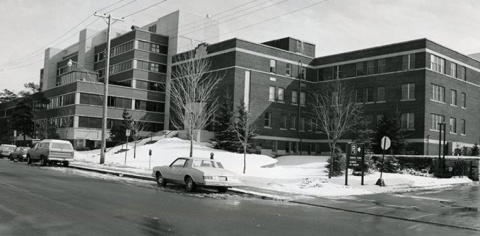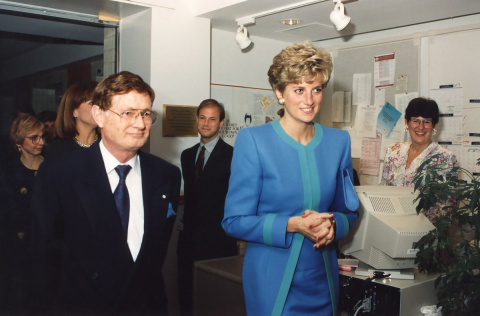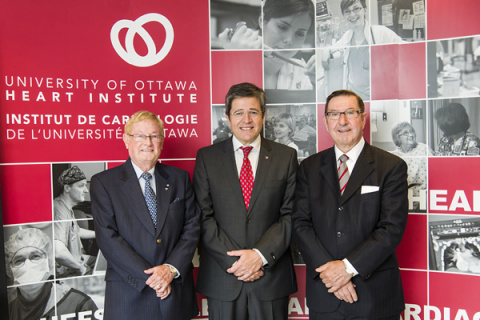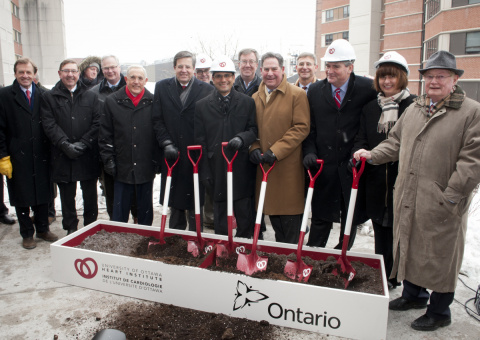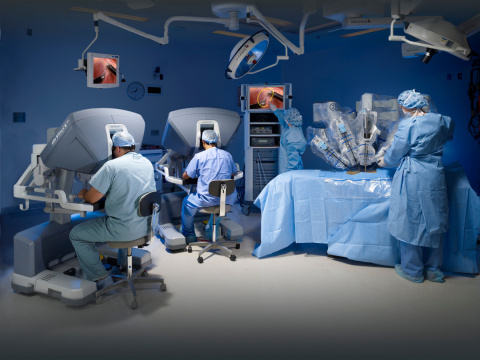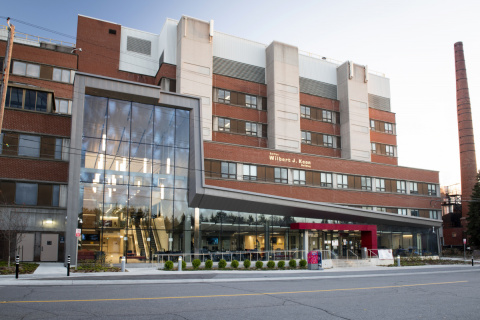The Heart Institute turns 45
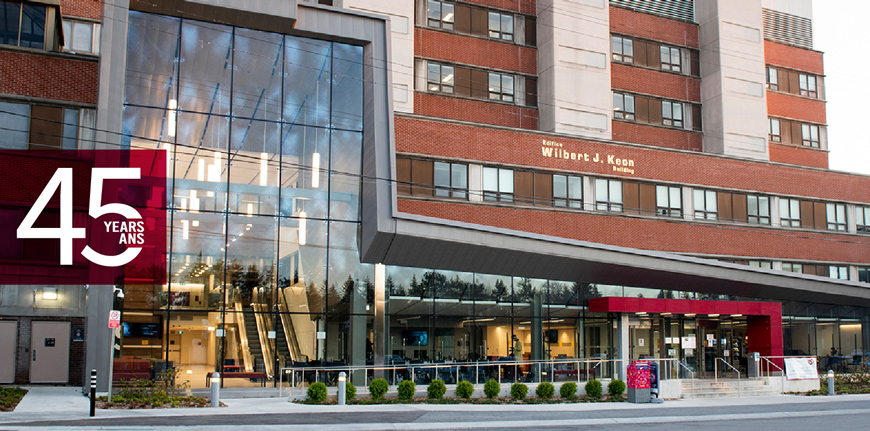
Three heart transplants in a single day, a 2,500-year-old mummy, a Royal visit. Safe to say a lot has happened over the last 45 years.
The early years: Canadian firsts, big strides in innovation, and a Royal visit
Founder Dr. Wilbert J. Keon’s vision is to create an integrated heart centre where cardiology, surgery, anesthesiology, and nursing are integrated for patient care. True to that vision, what begins as a department in The Ottawa Hospital would flourish into Canada’s largest and foremost cardiovascular care centre, encompassing prevention, diagnosis, treatment, rehabilitation, research, and education.
- 1981 – The UOHI performs Ontario’s first angioplasty.
- 1984 – Dr. Keon and his team at the UOHI perform the first heart transplant in Ottawa.
- 1986 – A Jarvik 7 artificial heart is used for the first time in Canada as a bridge to transplant.
- 1989 – The UOHI performs Canada’s first neonatal heart transplant on an 11-day-old infant.
- 1991 – As part of the grand opening of the day unit, Dr. Keon leads Her Royal Highness, Diana, princess of Wales, and Canadian Prime Minister Brian Mulroney and his wife on a guided tour of the Heart Institute.
- 1995 – Canada’s first cardiac Positron Emission Tomography Centre opens at the UOHI.
The 2000s: Significant advances in cardiac imaging and telehealth
The turn of the century brings substantial developments to the Heart Institute. Physicians and researchers greatly expand their pursuits of advanced heart function studies while ensuring shorter diagnostic wait times for patients. What’s more: The Heart Institute establishes a revolutionary Cardiac Telehealth Department, making the kind of out-of-this-world innovation depicted in Hanna-Barbara’s 1962 classic, The Jetsons, a modern day reality.
- 2005 – The UOHI’s novel STEMI Program demonstrates a fourfold reduction in mortality among high-risk heart attack patients.
- 2005 – The UOHI launches its Cardiac Telehealth Department.
- 2007 – Researchers identify a DNA sequence that indicates a 40% increase in a patient’s susceptibility to heart disease.
- 2008 – The UOHI performs a CT scan on Hetep-Bastet, a 2,500-year-old Egyptian mummy, as part of a collaborative effort involving the Canadian Museum of Civilization (now the Canadian Museum of History), l’Université du Québec à Montréal and Western University.
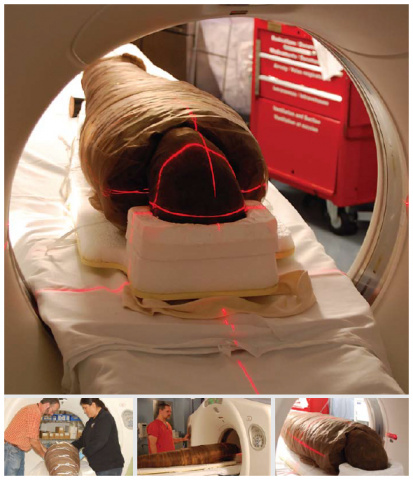
The UOHI performs a CT scan on Hetep-Bastet, a 2,500-year-old Egyptian mummy, as part of a collaborative effort involving the Canadian Museum of Civilization (now the Canadian Museum of History), l’Université du Québec à Montréal and Western University.
The 2010s: A decade marked by exponential growth
The UOHI undergoes the most significant expansion in its history. More than 147,000 square feet of additional space increase the institute’s capacity for surgical interventions, catheterizations, electrophysiology procedures, and intensive care beds. Five multidisciplinary Heart Teams form to ensure patients receive better and faster access to care. Game-changing discoveries are made in the UOHI’s molecular and genetic laboratories, cardiac imaging facilities, ORs, and procedure rooms that strengthen the institute’s global reputation as major player in the cardiac research arena.
- 2011 – The world’s first bedside genetic test determines if a patient is at risk of reacting poorly to standard drug therapy.
- 2011 – The UOHI is designated a bilingual institution under the Province of Ontario’s French Language Services Act, marking its commitment to offering services in both official languages.
- 2012 – Surgical teams carry out the UOHI’s 498th, 499th, and 500th heart transplant in a 24-hour period.
- 2014 – Dr. Thierry Mesana takes over as president and chief executive officer of the UOHI, succeeding Dr. Robert Roberts and Dr. Wilbert J. Keon as the third president and CEO in the institute’s history.
- 2014 – The UOHI launches the Canadian Women’s Heart Health Centre, the first of its kind in Canada.
- 2015 – The UOHI celebrates the groundbreaking of its expansion, a project that will have a substantial impact on the delivery of cardiac care across Eastern Ontario and will help the Heart Institute remain at the forefront of cardiovascular research and education.
- 2016 – The UOHI invites former patients, their families and the community to a breakfast event celebrating the institute’s 40th anniversary. More than 500 people join in the celebration on Ruskin Street.
- 2018 – The UOHI inaugurates its brand-new critical care tower. Complete with the da Vinci® Surgical System and Azurion Image Guided Therapy equipment, it is the most sophisticated and technologically advanced in Canada.
- 2019 – The UOHI, in partnership with six regional healthcare partners, introduce Epic Systems, a fully-integrated, patient-centered, electronic medical records management tool enabling seamless, cohesive care for patients across the Champlain region.
- 2020 – The final stage of the UOHI’s expansion is complete when the UOHI unveils a renovated Cardiac Imaging Centre to the public. This multimodal imaging facility provides a convenient, consolidated, and streamlined service for patients, while also improving workflow and collaboration for hospital staff.
- 2021 – The COVID-19 pandemic has a major impact on the Canadian healthcare system, and the Heart Institute is not unaffected. The UOHI extends a sincere and heartfelt ‘thank you’ to those on the frontline who continue to provide world-class care for cardiac patients despite unprecedented challenges.
The future is bright: Heart Institute promises to go further together
In the years ahead, the UOHI plans to continue improving and expanding its heart teams and regional hub-and-spoke model, while putting patients first. Teams will lead major efforts in clinical research, big data, and the institute’s priority areas for driving innovation, including women’s heart health, cardiac imaging, and precision medicine. To learn more, the UOHI invites you to read about its strategic plans through to 2024 and to watch the video below.

